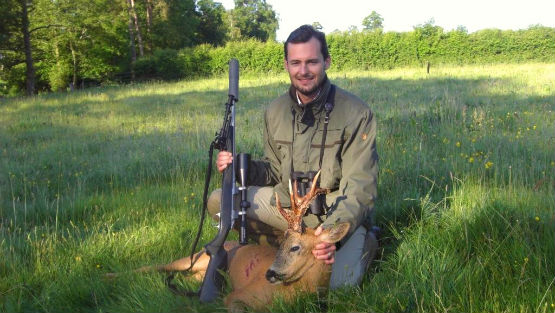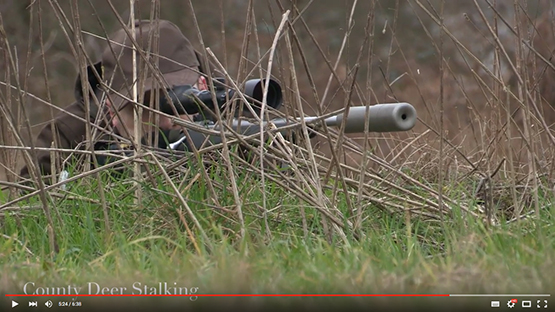"All Change please"; April represents the end of the line for the females of five of the UK's six species of deer and a change in focus toward the males.

(Above: An early season Roe Buck taken with County Deer Stalking)
The reason? Well between now and the beginning of November the females will be weaning their young. Therefore to shoot a female after the 31st March is not only illegal but may result in the orphaning of a dependent calf or fawn.
The anomalies that exist are amongst the smallest species of deer. Muntjac have no closed season due to the haphazard nature of their love life, which basically goes on anytime, anywhere....is it any wonder this species is spreading so fast! It is therefore not possible to offer them the protection afforded to other species, whilst still effectively controlling numbers.
The other anomaly is of course amongst Chinese Water Deer, here it is due to the problem of identifying the sexes that means those in charge of legislation, have deemed it prudent to protect both the male and female from the 1st April until the 31st October, such is the desire of the UK Deer Act to protect our countries wild deer.
So what does that leave? Well, in England & Wales, for another month at least, quite a lot. In fact, all of the males except CWD. Make the most of this however, because in just one month’s time it will be only Roe Buck and Muntjac for several months to come.
In Scotland things are a little different in April with just Roe Buck and Fallow Buck in season.
So with that all ‘clear as mud’ what else should you know about April? Well to be frank it’s not the best time to be out. Not in terms of the ease with which it is possible to spot deer, but simply because it is not a great time to be shooting your males. This is because the herding species are already starting to cast and many Roe Buck will still be in ‘tatters’.
If you are simply culling young males this is not an issue however, if it is a trophy Roe Buck that you are after, then hold off. Even if the mature Roe Buck are clean of velvet, they will not have developed the aesthetically pleasing depth of colour that comes from months of thrashing. Neither do white or pale antlers score highly with the trophy measuring boards.

On to this month’s film in which we stalk a Fallow Pricket. We also take a look at the importance of deer species identification: short-films 'Fallow Stalk in Early March'.
 IN Season in England & Wales: Fallow Buck, Roe Buck, Sika Stags, Red Stags, Muntjac Bucks & Muntjac Does.
IN Season in England & Wales: Fallow Buck, Roe Buck, Sika Stags, Red Stags, Muntjac Bucks & Muntjac Does.
Off Season in England & Wales: Roe Does, Fallow Does, Sika Hinds, Red Hinds, CWD Bucks & CWD Does.
In Season in Scotland: Fallow Buck, Roe Buck
Off Season in Scotland: Red Stags & Red Hinds, Sika Stags & Sika Hinds, Roe Does and Fallow Does.
(Peter Jones - Editor)



















